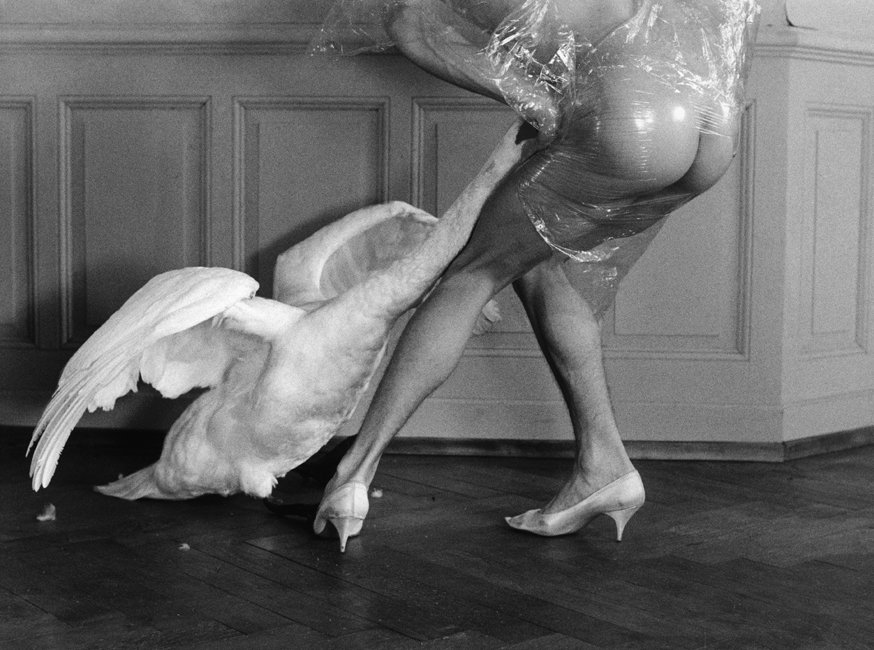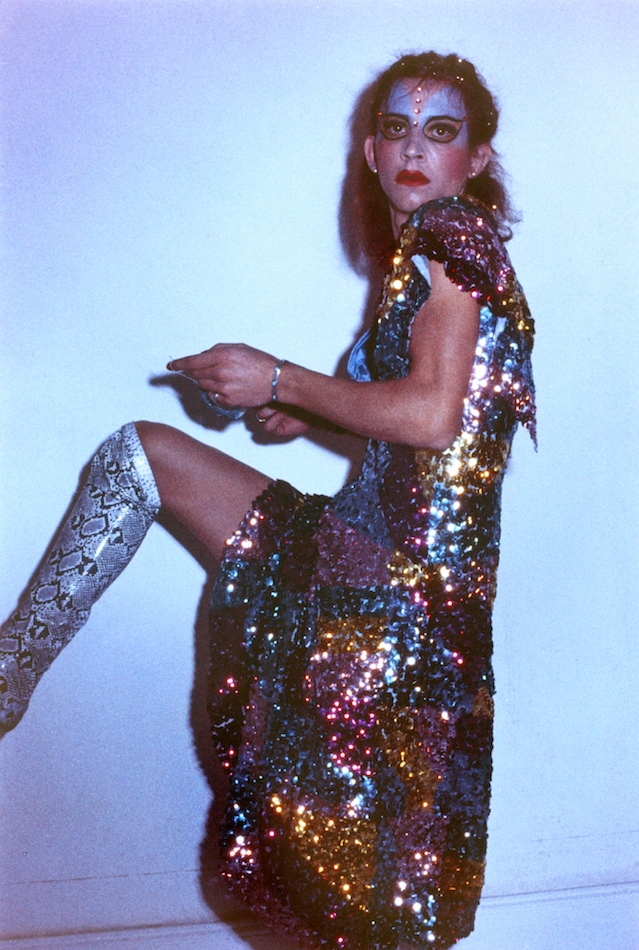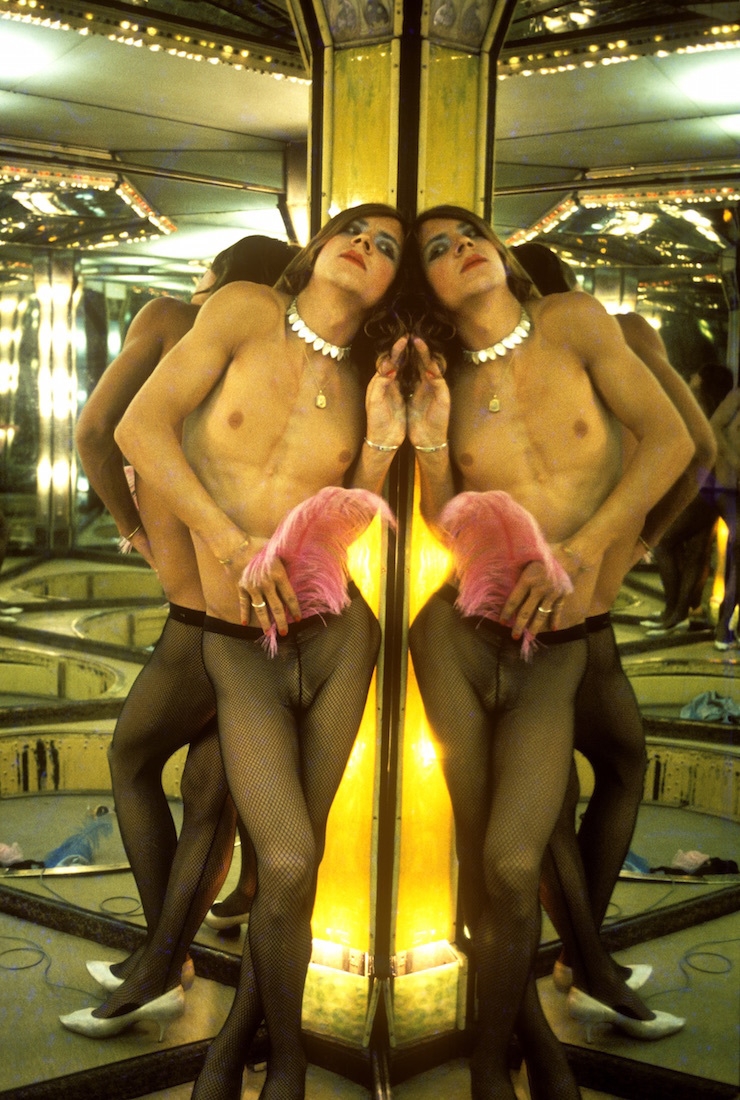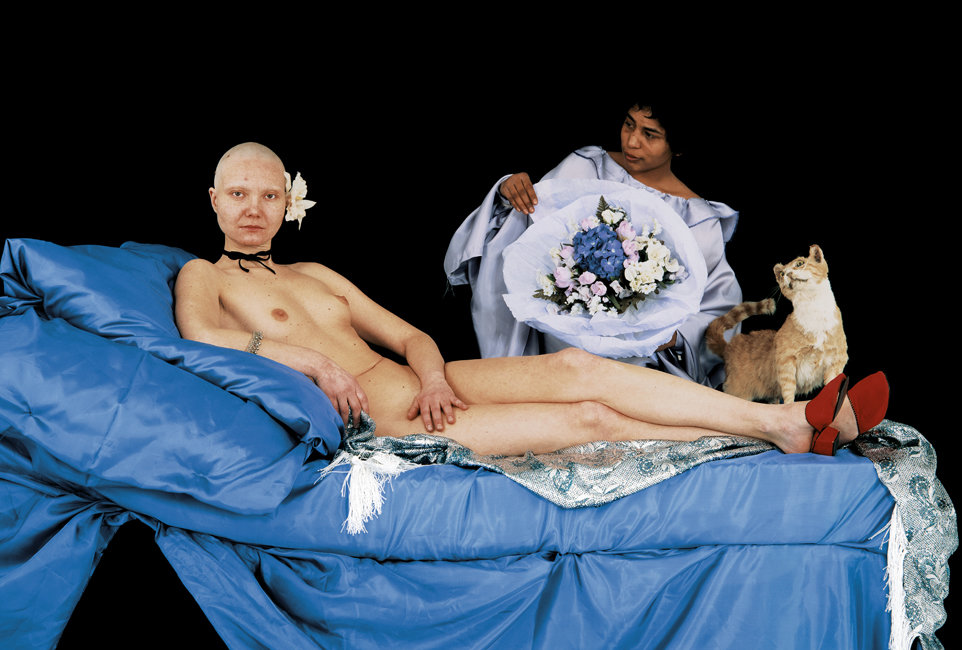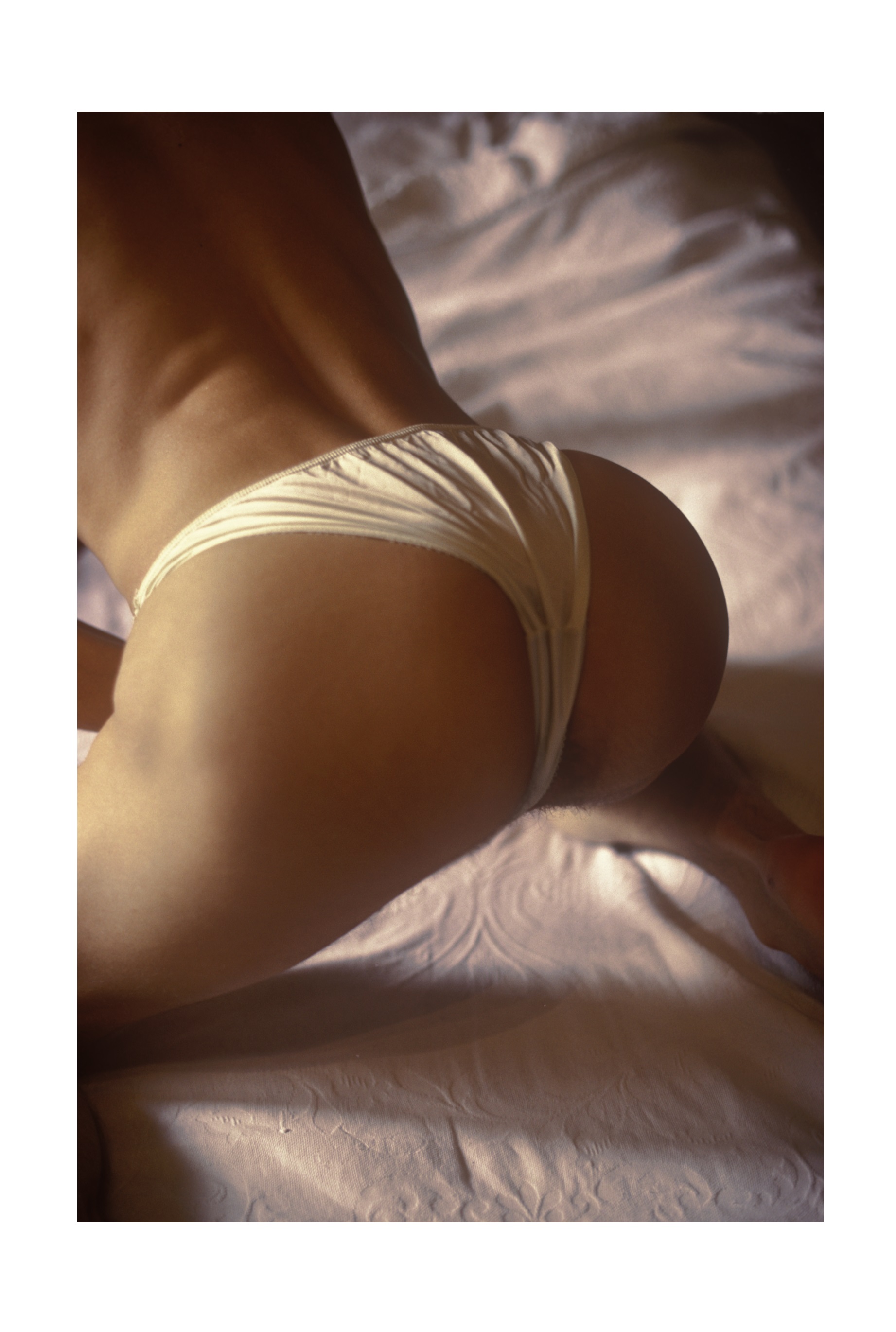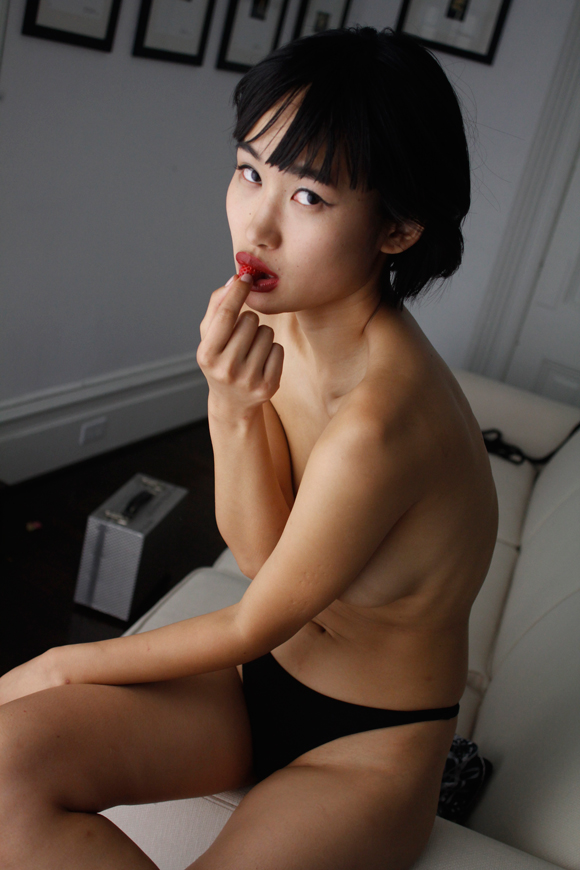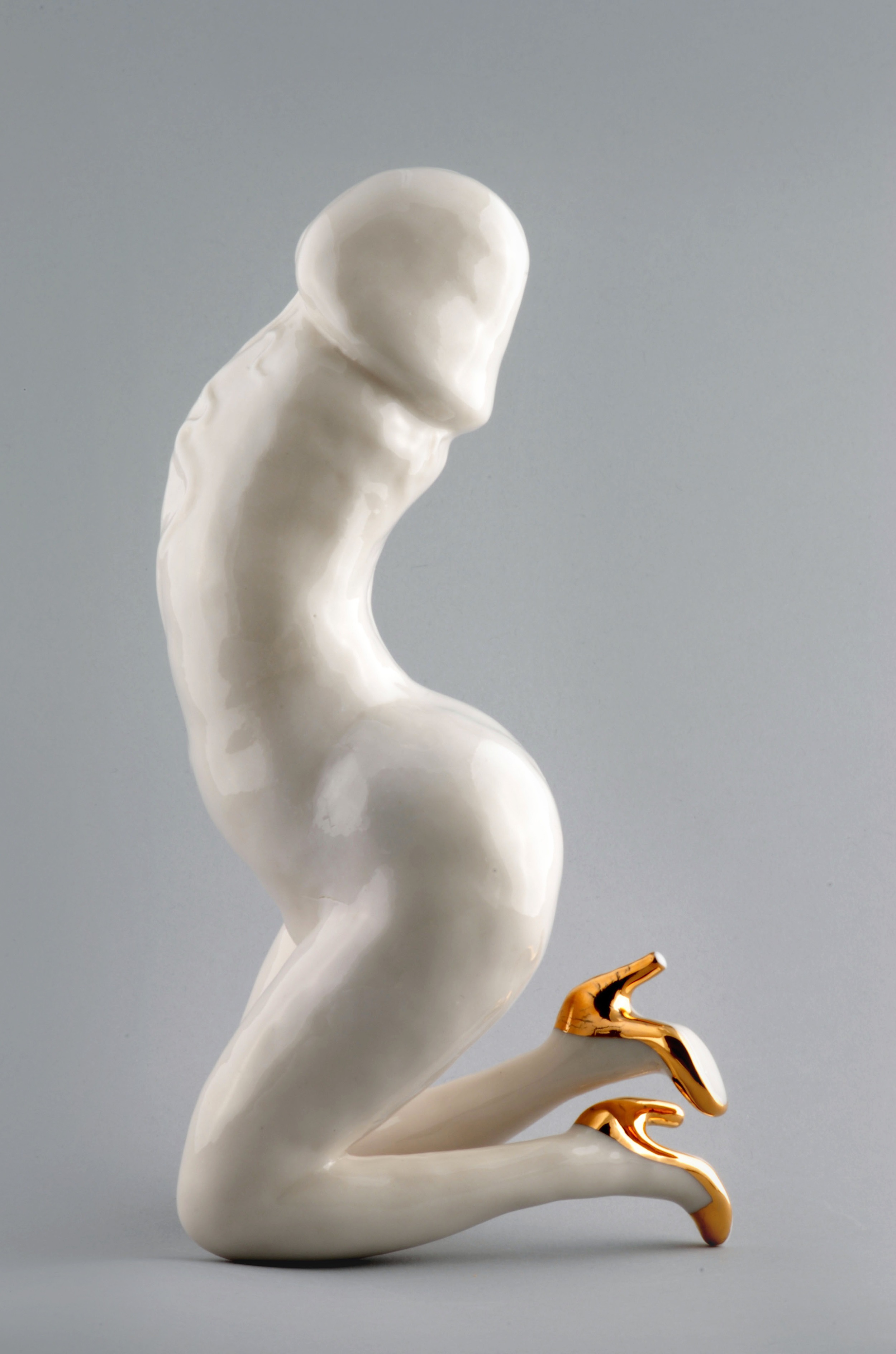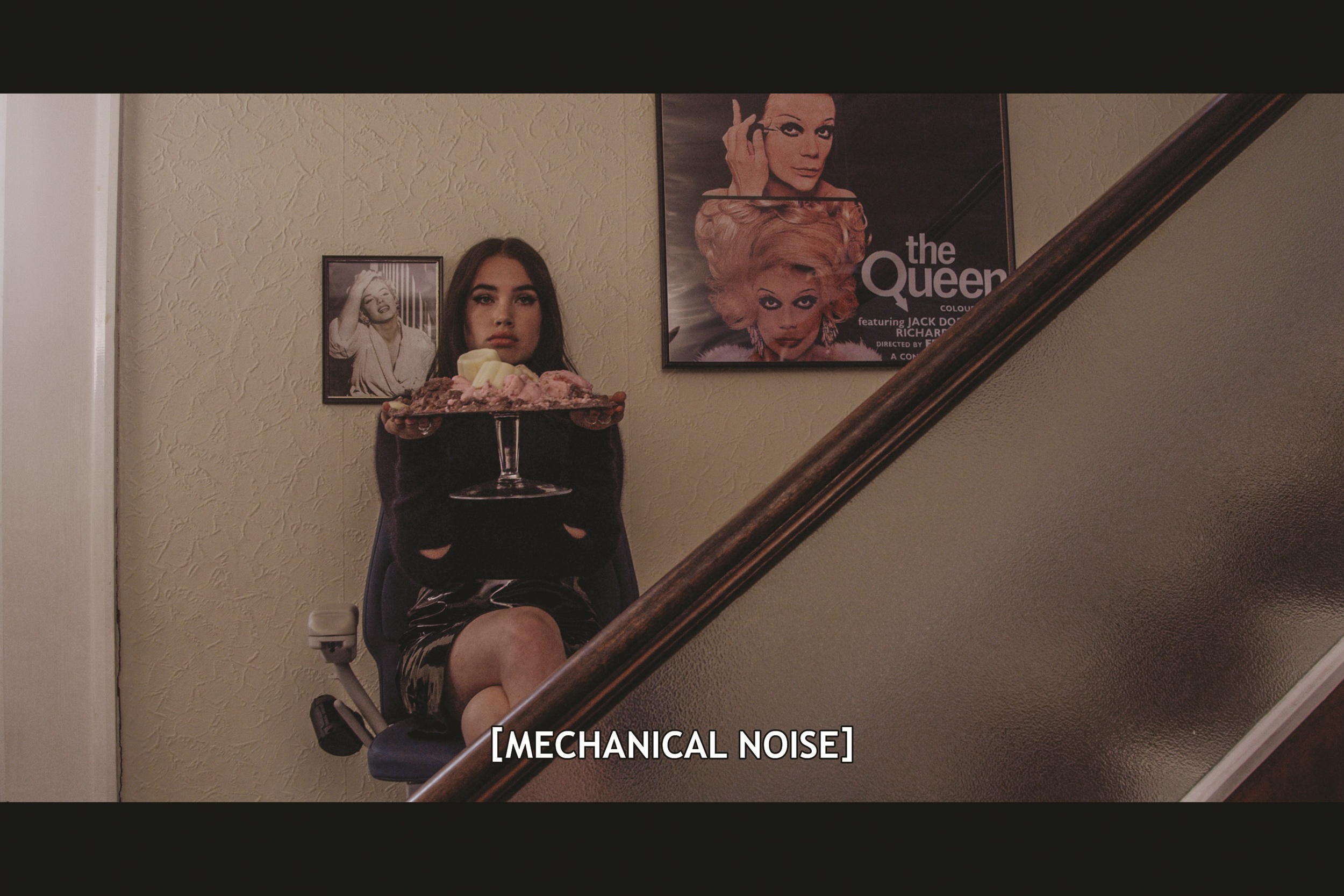Kristin Prim is a freak of nature and she is so wise at her young age that it will astound you. When she started Prim magazine at only 14 years old, she became the youngest print magazine editor in the world. Indeed, Kristin Prim is not your average girl – now woman – but she’s always been powerful and individualistic, which is one of the things that makes her so fascinating. Her first loves were music and art, but when her parents moved to a more conservative town in New York, she turned towards fashion, and publishing, as an outlet to connect with people that were more like her. While many kids were plastering their walls with cut outs from Teen Vogue, Prim was publishing her own glossy mag and distributing it globally. At 19, though, Prim grew disillusioned by the saturation of the fashion market and culture – and the idea that anyone with an impressive Instagram following could make it to the front row at fashion shows. Now 21, she has focused her efforts back to the arts. With Prim magazine on the backburner, the brilliant, young, wise and articulate publisher has recently released the first issue of a new biannual art book, entitled A23, which highlights the work of ten artists. The inaugural volume, entitled The Mysticism of the Female explores “the metaphysical and tactile nature of both women and feminism” and features major artists like Luciano Castelli, Mary Beth Edelson and more. Each page is a gorgeous example of the art book’s grand ambitions. We were lucky enough to catch up with Prim to discuss her new art book, the founding of her magazine when she was barely a teenager, her relationship with fellow publishing prodigy, Tavi Gevinson, and she gives some great advice to other young culture shapers on how to get the ball rolling.
Oliver Kupper: What was your earliest exposure to art, fashion, and photography? It seems like you had a very early introduction to this world.
Kristin Prim: My two big interests had always been music and art. They had nothing to do with fashion. But when I was about 13, I decided that I wanted to do something that would take me out of my comfort zone. I figured that thing would be fashion. I was so into art and music. I’m a classically trained musician; I had been painting, drawing, and taking photographs since I was young. That’s how I was introduced into fashion. I decided to start my own fashion magazine that was called Prim. I worked on Prim for seven years, until I was nineteen. Then, I wanted to turn my attention back to my own fine art work. I worked on building my portfolio for about a year. I decided to do a print when I was twenty. Now, I’m twenty-one, and the edition is coming out in two weeks. That’s how that shape shifted.
OK: How did you start Prim? Were there certain magazines that inspired you? Did you think you could do something better than other publications?
KP: When I started Prim, I had no idea that magazines like Self Service and Dazed existed. I had no idea there was this world out there of high fashion, style-oriented, artistic publications. I was looking at Vogue and Elle and thinking that I would want to take fashion in a different direction. About a year into starting Prim, I discovered this world and how amazing these magazines were. It did begin to influence me, because I felt at home with them. Prim was still unlike any other magazine out there. It was a happy accident. I was lucky. I was able to create a home for something that didn’t exist.
OK: A lot of people start magazines because they are inspired by independent publications.
KP: They’re the best. There’s nothing like an independently published magazine.
OK: Were your parents supportive of the magazine?
KP: My father financially supported the magazine until I put Prim on hiatus when I was 19. He gave me the investment money that I needed when I was 14 to pay for the print publication. I don’t want to say my parents don’t support my work, but my parents are much more conservative than I am. As my work began to evolve into more boundary-pushing, they began to step away from it.
When I started Prim, I was only 14. I wasn’t into myself yet. As I grew into my creativity, so did the publication. I began to do more things that were rather unconventional. They support my entrepreneurial efforts, but I don’t know if they support my work.
OK: Did you have a lot of support from the fashion world? Were there any designers that reached out to you that you looked up to?
KP: The reason I started Prim was because my parents moved me to a conservative area in New York. I didn’t fit in at all. I got in trouble a lot with my peers. I started Prim just to keep myself busy and stay connected with people around me. I didn’t want Prim to have more than ten readers. I really mean that. To be able to print was incredible. The feedback from the fashion industry was so unexpected. I’m being genuine when I say that. It was incredible because I never fit in. To be welcomed and grandfathered into such an amazing industry that could support me was life-changing.
OK: A lot of people talk about Tavi Gevinson when they talk about your work.
KP: I’ve known her since I was fourteen. We met when she was twelve. She sent me an email introducing herself. She was running Style Rookie at the time—her blog. She said, “I’d love to meet up. I’m coming to New York during fashion week. Can we do it? Tavi and I, for eight fashion seasons back-to-back, would go and get ice cream.
OK: Did you have conversations about what you were doing?
KP: We were in the same boat. We were the youngest people there by far. That created a bond between us. A lot of people put us in the same boat because we are two of the youngest girls in fashion, media, and art. We were each other’s mentors.
OK: You’re starting to pull back from the fashion world. Is there anything specific pulling you away, or do you just want to get back to your initial interests?
"I got so drawn to mysticism and spirituality. I say I don’t have a religion. My religion is karma, faith, and synchrodestiny."
KP: It’s half and half. When I started in the fashion industry, there was no Instagram. Facebook wasn’t even big. When I started, fashion week was still in Bryant Park. You had to work really, really hard to get to where you were. Today—and a lot of people don’t agree, but I will stand by this—I think the fashion world is overly democratized. It has been so mulled over. You can do nothing and have an Instagram account that has 40,000 followers and sit in front row. It really began to hurt the industry. When I was fifteen and sitting in front row, I was sure that the people sitting next to me were working as hard as I was, or more so. These were people like Jefferson Hack. When I was 18, 19, and 20, sitting front row, I would look next to me and see Instagram girls. That hurt the industry. I will say that. I got very discouraged with what was going. I see that in the art world, but less so than the fashion world.
Next week, I have a few meetings with fashion magazines to work with them, so it would be hypocritical to say I’m done with the fashion industry. I definitely wanted to shift more of my focus to art.
OK: This issue is not really an issue. It’s an art book. There’s a lot of mysticism involved in the themes of this volume. Is mysticism close to your heart? What are some of your experiences with mysticism?
KP: I grew up Catholic. I went to a private Catholic grammar school and an all-girl’s Catholic high school. I love the act of ritual. I connect—to a certain extent—with Catholicism. You go to a mass and it’s so ritualistic. There’s such a beauty in that. When I was in high school, I reached out to discover more cult practices, paganism, Hinduism, Buddhism. I’m a very spiritual person. My aunt, who died when I was 13, she was a big influence on my work. She was very spiritual. I remember when she would tell me about these out-of-body experiences. I was about 5 years old when she told me this. I don’t remember much about my childhood, but I remember being fascinated with that. After she died, I began looking into it and what it meant. I got so drawn to mysticism and spirituality. I say I don’t have a religion. My religion is karma, faith, and synchrodestiny.
The second edition of A23 is metaphysics. All artists have spiritual beliefs, and we have an interesting roster of art. It should be very interesting to get an insider’s look into their heads.
OK: What is the curating process like?
KP: When I first conceptualized the idea for A23, the first four editions popped into my head. The first edition is about mysticism and the female. I didn’t want to approach it from the physical standpoint necessarily. In the edition, we actually have a cisgender man in it. I thought that was incredible, to be honest. I thought of artists who were prolific, who have exhibited worldwide, who have cut their teeth. I wanted to know which of those artists I would be personally interested in. I wanted to know their views on the female and gender. So I looked to Mary Beth Edelson—who is a pioneer in feminist art in America. I looked to people like Luciano Castelli, Heide Hatry. I wanted to get a lot of different viewpoints. I wanted to get a lot of different artists who had different mediums. The process was rather calculated, but it was also simple. I picked out artists from the 60s, 70s, 80s, 90s, and a couple from today. Everything is contemporary, but there are all different mediums.
OK: What is your advice—not just to other women and girls—but to everyone who wants to start their own thing or get something off the ground?
KP: I always say to do it yourself. That’s so important. Being in the fashion industry, I was subjected to a lot of abuse from different people that I walked away from. For young women, it’s very easy to fall into that trap from people who want to take advantage of you. Young men, too, but women still face it a little more in today’s fashion society. I would say always do it yourself. One of my proudest themes of my career is that I have done everything myself. Of course, there are people that taught me along the way.
I would also say to not be afraid of failure. That sounds so hackneyed, but you have to take risks. Every single project that I’ve worked on has been a major risk. Putting the money out there to start a publication is major. Putting the money out there to start an art book is major. But if you don’t take that risk, you’re never going to grow as an artist, as a creator, nor as a person in general. Do it yourself, and don’t be afraid to fail.
Kristin Prim's A23 is available to order online here. It will also be in selected fine bookshops and museums. Text and interview by Oliver Maxwell Kupper. Follow Autre on Instagram: @AUTREMAGAZINE

